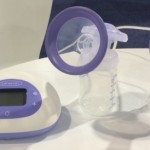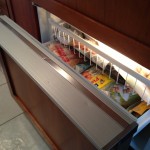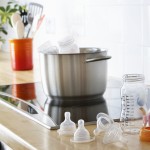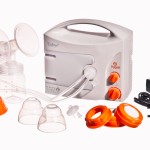When I think back on the year I spent breastfeeding and pumping, many of my memories involve standing by the kitchen sink and cleaning my pump supplies. Why? I spent a lot of time washing pump accessories. I washed them using hot water and dish soap after each pumping session, and also sterilized them at least a few times a week using Medela’s microwaveable sterilizing bags.
But now, as I’m starting to think about going through this whole pumping process again eventually, I can’t imagine spending so much time again on part cleaning. So I turned to an expert — Charity Pitcher-Cooper, a lactation consultant and nurse at my pediatrician’s office — to find out if there are any tricks for cutting down the time involved in pump accessory cleaning. The tricks I learned make up today’s hint.
1. Skip the Sterilization Step. Assuming your baby is a healthy, full-term baby, Charity says sterilizing is an unnecessary step. Rather, the pump parts just need to be washed with hot water and soap, and rinsed well. This true too for when you’re first taking the parts out of their packaging and getting them ready for use. “I do not recommend sterilizing pump equipment for healthy, term babies,” Charity says. “It is unnecessary and creates more work.”
So when does sterilizing become important? For sick and preemie babies we worry about sterility,” Charity says, adding that “for term, healthy newborns, clean is good enough.”
The U.S. Food and Drug Administration seems to agree. On its site, the FDA says that “sterilization is not necessary to keep [breast pump] parts safe and sanitary.” Similarly, the site Ask Dr. Sears also notes that “you do not need to worry about sterilizing storage containers or pump parts” when you’re pumping milk for a full-term, healthy baby.
2. Buy multiple pump part sets. Charity recommends having three sets of breast pump flanges (also called “breastshields”) and associated parts. In other words, consider having three sets of the accessories that you’re supposed to clean after each pumping session. With three sets, you’ll perhaps save some time on cleaning, and can have “one in use, one dirty, and one clean and ready to go,” Charity says.
3. Wait to wash the parts until after the second pumping session. When you’re short on time after a pumping session and in a pinch, Charity says it’s fine to throw the parts in a large Ziploc bag, stick the bag in a fridge and then take the dirty parts out and use them for your next pumping session. However, she cautions that the dirty parts should only be used one additional time, and you shouldn’t pump on uncleaned parts all day. In addition, in an ideal world, parts should be cleaned after each pumping, she says.
4. Use the dishwasher. According to the FDA site, “some breast pump parts can be put in the top rack of a dishwasher,” though you’d need to check the specific manual that comes with your parts to make sure they’re dishwasher safe. Medela, for instance, says on its blog that most of its breast pump parts can be washed in the top rack of a dishwasher.
To be sure, I’m not the first to discover these tricks. Moms commenting a while back over at KellyMom.com’s Facebook page mention a number of these methods. Meanwhile, the blog Uplifting Families mentioned tricks number two and three back in 2012 in a helpful post on the subject.
Concerned about any of these tricks, as they conflict with something else you’ve heard? As with everything in parenting, it’s likely that you’re going to get different answers on what’s okay pump cleaning wise depending on who you ask. Still, I’m happy to have these additional tricks in my arsenal for when it’s time to pump again.
What are your tricks for cutting down the time involved in cleaning pump parts and accessories?
Follow Hint Mama on Facebook and Twitter, and read more about her and her disclosures.







[…] a while back that my lactation consultant says assuming you have a healthy, full-term baby, it’s okay to skip sterilizing pump parts and accessories. Instead, she recommends just washing them with hot water and soap, making sure to rinse them off […]